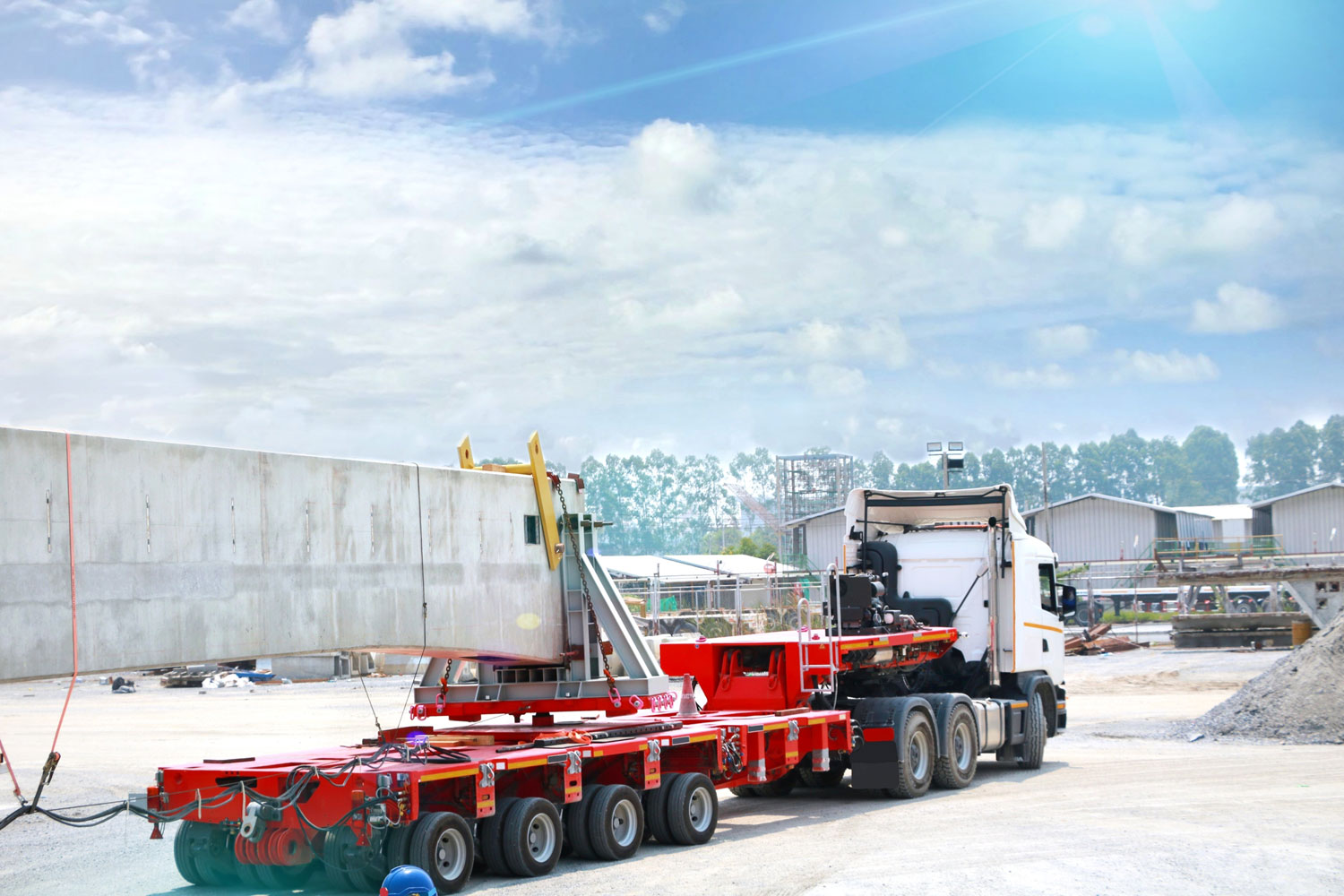
The dimensions and weights of vehicles used on British roads are regulated by the Road Vehicles (Construction & Use) Regulations 1986 (C&U) Regs and the Road Vehicles (Authorised Weight) Regulations 1998 (AW) Regs.
Special types vehicles are those, which do not meet the C&U and AW Regs, but can be used outside these rules under the authority of the Road Vehicles (Authorisation of Special Types) (General) Order 2003 (STGO).
Vehicles, which do not comply with an STGO order, can be used on the road if Special Orders have been issued by:
Vehicles most likely to be used under an STGO
Vehicles most likely to be used under an STGO are:
Under C&U – when trailers are built and normally used to carry indivisible loads of great length (that is, abnormal indivisible loads) – they can be longer (but not wider) than the normal legal maximum.
There is no limit to the number of items of exceptional length that can be carried. Depending on the size of load – if certain conditions are met – C&U Regs also allow loads to overhang the front, rear and sides of vehicles.
These conditions include:
A brief guide to C&U rules for overhanging loads to the front, rear or side can be found on the page Load and Projection within this section.
The Road Vehicles (Authorisation of Special Types) (General) Order 2003 (legislation.gov.uk)
Special vehicles
Special vehicles do not have to follow the regulation of construction, weight and use, contained in S41 of the Road Traffic Act 1988 and may be used by Special Order issued by the Vehicle Certification Agency (VCA) under S44 of the Act.
An order can be issued about:
The order will say how the vehicle or trailer can be used in order to be authorised.
Attendants
An attendant is required where:
Where an attendant is needed they can travel in the vehicle according to the STGO or Special Order movement. Alternatively, they can travel in an escort vehicle, providing that they are:
Where 3 or more loads are travelling in convoy, only the first and last vehicles need an attendant.
Escorts
There is no law requiring a vehicle moving under STGO or a Special Order to be accompanied by an escort vehicle, although the police can make sure an escort vehicle is used when necessary. Codes of practice relating to escorts are published by Highways England, various local authorities, and police forces, various local authorities, and police forces.
Documentation
There is no set format for notifying the police, highways and bridge authorities. And you don’t need to carry the notification document in the vehicle. The operator should be able to produce a copy if the examiner requests it.
The notice given to the relevant authorities is operator specific, so the movement of loads cannot be sub-contracted without the consent of the relevant authority.
This sample form of notice to the police is for a load that complies with the Road Vehicles (Construction & Use) Regulations 1986. The STGO version will have axle weights, axle spacing and dimensions. It will also include exemption from legal responsibility for the bridge and highways authority.
Enforcement
The STGO Regs and Special Orders provide certain exemptions to C&U and AW Regs, therefore no offence exists of failing to comply with STGO and Special Order regulations. A failure to comply with any of the rules relating to the particular STGO and Special Orders listed above would result in the exemptions not being applicable and the C&U and AW Regs coming into force.
There is no need for the Movement Order to be carried on board. If the movement is covered by a Special Order (such as weight in excess of 150,000 kg) then this must be carried on board.
NB: Weight: if the axle gross or train vehicle weight are more than those stated in the notice given to the relevant authorities, of the STGO category, the amount of the overload should be calculated against the AW Regs: for example, 44,000 kgs train weight for a 3×3 artic.
Legislation
This guide should be used together with the legislation and regulations about Special Types vehicles (below):
Schedule 2(35) Exemption to plating and testing regarding vehicles defined within S42 (special vehicles) The Road Traffic Act 1972
Source – DVSA